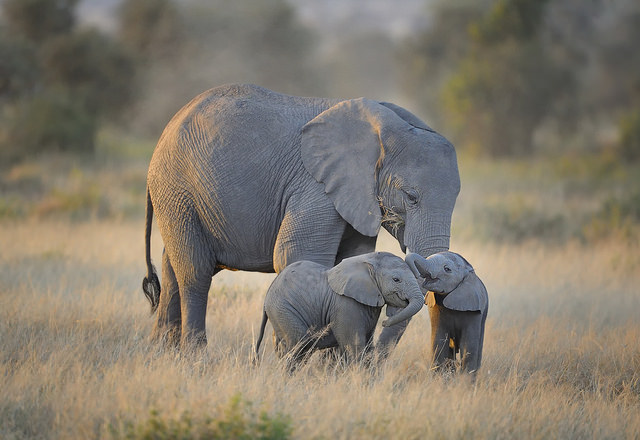Why Elephants Never Seem to Get Cancer

As well as never forgetting, elephants almost never get cancer, and until now we have had no idea why. True, they have an enormous body size and, as such, an incredibly large number of cells, leaving them more likely to experience mutations in cell division that may lead to cancer. However, cancer mortality rates of less than 5% for elephants compared to between 11% and 25% for humans suggest that these giants have another trick up their sleeves (or trunks, rather). That large animals such as elephants seem to be resistant to the development of tumours has puzzled many for years. This is widely known in scientific circles as Peto’s Paradox, which suggests that there is no link between body size and cancer1.
It seems like an answer to this tall tale has finally been proposed by two different teams, headed by Joshua Schiffman of the University of Utah and Vincent Lynch of the University of Chicago2. Both studies confirmed that elephants have around 20 copies of the TP53 gene, which is well known for suppressing tumours. Humans and other mammals have only one copy of this gene, which plays an important role in protecting the body against cancer. Without it, you have a whopping 90% risk of cancer in your lifetime!
So now that we know the TP53 gene does some good stuff, why is it that elephants have so many copies? In tests, it was thought that elephants had an increased ‘apoptic response’ to the destruction of their DNA compared to humans. When the DNA in your cells is damaged, p53 proteins prevent the cell from multiplying and gives it time to repair itself. If the damage is too extensive, it initiates a programme of cell death, known as apoptosis. If this does not happen, some of the damage to the cell may mean that it replicates out of control, without repairing itself or dying when it should. It appears as if the extra copies of TP53 are helping elephants to kill off damaged cells sooner and faster, therefore protecting themselves better against cancer. It is important to note that there may be other biological mechanisms at play as well as the TP53 gene. For example, larger animals tend to be more sluggish, which slows the rate of cell division and may also put them at lower risk from cancerous cell mutations.
Elephants may face illegal poaching, habitat destruction and conflicts with humans on a daily basis, but it seems like cancer shouldn’t be high on our list of worries for them. However, it is important to understand the pathways of cancer avoidance in other mammals, not least because it may shed light on our ongoing fight against human cancer. The work on elephants have certain evolutionary implications too. It is thought that the extra copies of TP53 could be linked to the evolution of elephants’ large body size3. Extra copies of the cancer fighting gene have been found in elephants’ extinct ancestor, the mammoth.
From their social structure to body structure to their cancer-fighting genes, there is very little about elephants that is not fascinating! Find out more about these playful pachyderms here and here.
Edited by Debbie Nicol
References
- more information can be found here http://www.nature.com/news/massive-animals-may-hold-secrets-of-cancer-suppression-1.12258
- Both copies are open access and available here http://jama.jamanetwork.com/article.aspx?articleid=2456041 http://biorxiv.org/content/early/2015/10/06/028522
- A good overview of this can be found in Nature http://www.nature.com/news/how-elephants-avoid-cancer-1.18534#/b1










